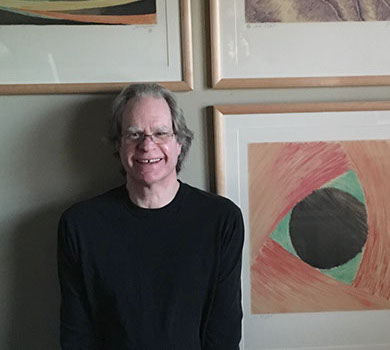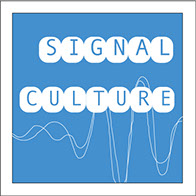About Our
Residency
Programs
Facilities &
Equipment
Residency
Applications
Artists in
Residence
Researchers in Residence
Toolmakers in Residence
Which Program is Right for You
Fred Collopy

Fred Collopy, PhD
Professor of Design and Innovation
Weatherhead School of Management
Case Western Reserve University
Cleveland, Ohio
In the 1970s I moved from creating abstract color film, through video to computer-based dynamic visual art. I did my first graphic programming on the Compucolor 8001 and the Apple II, so my work has always been anchored in relatively low cost, stand alone environments. While using turtle graphics to imitate effects seen in video feedback, I assumed like so many others who have worked in this area, that I was inventing an entirely new art.
As my musical interests gravitated to jazz and my visual aesthetic moved to embrace Paul Klee, Georgia O’Keefe, Jackson Pollock, Moholy-Nagy, Karl Gerstner, Morgan Russell, Stanton Macdonald Wright, and dozens of other modern painters, I learned of experiments along similar lines. Inspired by them, I dug into the history of color, form and motion as foundational elements of an art of color, light, and musical movement.
I studied the history and the theory of the form, collecting and organizing much of it on the RhythmicLight.com site. I wrote papers on the subject for Leonardo, Glimpse, Offscreen, The Journal of Visual Programming Languages, Metascience, and others. My work was featured in K. Brougher, et al.’s Visual Music: Synaesthesia in Art and Music Since 1900, Bruce Wand’s, Art in the Digital Age, Michael Betancourt’s The History of Motion Graphics, Matt Woolman’s Sonic Graphics/Seeing Sound, a Leonardo artist’s statement in 2001, and other compilations and histories. I have lectured extensively on the topic including at the 1998 International Symposium on Electronic Arts in Manchester England, the 1999 IEEE Symposium on Visual Languages in Tokyo, SIGGRAPH 2000, the Academy of Management 2000, SonicLight 2003 in Amsterdam, the San Francisco Performance Cinema Symposium in 2003, and Seeing Sound in Bath, England in 2016.
In 1998 and ’99 I was a visiting scientist at IBM’s Thomas J. Watson Research Center where I worked with the Computer Music Center on visual extensions to Sonnet, their music programming environment. During that period I produced the visual CD Unauthorized Duets, on which I interpreted music of Brian Eno, David Bowie and Eileen Ivers.
All the while, I was programming and developing as an instrument designer. My goal is to provide for the kind of expressiveness that musical instruments do; to permit visual artists to play abstract images as musicians play abstract sounds. I am currently developing imager, an app designed around the iPad mini. Specifically, I am exploring the range of visual expressiveness that can be achieved while taking that device’s intrinsic capabilities as the core constraint set.
© 2022 Signal Culture. All rights reserved.
